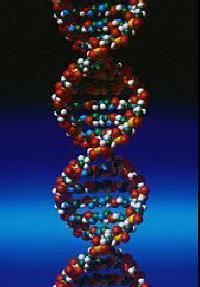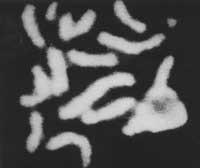Human genome
2000/05/28 Kortabarria Olabarria, Beñardo - Elhuyar Zientzia

The Human Genome project began in 1990. Initially, it was a project launched by the U.S. Department of Energy in collaboration with the country's national health agencies. Although the project would theoretically last 15 years, technological advances have allowed experts to consider that the project will be completed by 2003. Therefore, its total duration will be 13 years.
Since 1990, at least 18 countries in the world have launched human genome research programs: Australia, Brazil, Canada, China, Denmark, France, Germany, Israel, Italy, Japan, South Korea, Mexico, Holland, Russia, Sweden, United Kingdom and of course the United States. Human genome research organisms (HUGO: The Human Genome Organisation) coordinates research in all countries.
The objectives of the Human Genome project, recognized, are:
- Identification of all human genes.
- Sequencing the base pairs that form human DNA.
- Collect all this information in databases.
- Develop appropriate tools for analyzing all data.
- Establish the ethical, social and legal basis for the use of all information obtained.
Therefore, the objectives are clear. However, you can ask the question or, rather, the question comes below: And why is it important to know the genome of beings, in this case humans? The genome is all the body's DNA. The genome contains all the information necessary for the body's construction, which is concretized in protein synthesis. Proteins structure the body, control the metabolism, determine the position of the body before foreign external organisms, determine the color of the eyes…
All this information reflected in proteins is encoded in five molecules known as hydrogenated bases: adenine (A), guanine (G), thiamine (T), cytosine (C), and uracila (U). The latter does not appear in DNA, but in RNA. RNA plays the role of DNA in simple organisms, while in structures like humans, RNA bridges DNA and protein building, an intermediate step.

These hydrogenated bases are organized into sequences and each protein is determined by a certain sequence. Therefore, if an organism is to be encoded, the sequence of these four bases must be established in each gene. Given that all organisms are formed from bases A,G,T,C, and U, the place that occupy these bases is fundamental in the separation of organisms. In addition, because there are similarities in the genetic sequences of all organisms, research from other non-human organisms can contribute to the formation of the human genome. Hence the genomes of other beings such as Escherichia coli bacteria, fruit fly, laboratory rat, etc. have been formed.
How much information does the human genome have?
If all of the DNA sequences of the human genome were collected in the books, about 200 books of 1,000 pages would be needed, that is, about 200,000 pages of empty text. If we start reading all these pages, without interruption, it would take about nine years. It is calculated by reading 10 nitrogenous bases per second, 600 per minute, 36,000 per hour, 864,000 per day, in 315,360.000 years. The human genome has approximately 3 billion bases.

Today, for information accumulation systems, meeting is a great challenge: it would amount to one million megabytes bases (one million bytes). A byte is 8 bits. Bits are the smallest units of information as if or not. Therefore, in order to build the human being 24,000 million questions would be needed that can be answered with a yes or no. All this information, on a computer, would be about three thousand gigabytes, but it would only receive the sequence of bases, everything else - new data, notices, special software - would be out.
Chromosome 22
Thanks to the collaboration of researchers from the United States, the United Kingdom, Japan and Sweden, on 1 December 1999 the complete coding of chromosome 22 of the human genome was achieved. It is the second lowest of the 23 pairs of chromosomes that form the human genome. This chromosome has hydrogenated nearly 34 million DNA bases. Chromosome 22 plays an important role in certain types of cancer, hereditary heart disease, mental illness such as schizophrenia, congenital malformations… Therefore, a total sequencing of genes can be of great importance when it comes to fighting these diseases. In addition, knowing chromosome 22, we can observe how the genome is structured, help to understand how human evolution has been and see if it resembles the genome of other species.
Recently -April -, 5. The sequence of chromosomes 16 and 19 has been completed. It can find different types of cancer, hypertension, diabetes and many genes related to atherosclerosis.
Published in 7

Gai honi buruzko eduki gehiago
Elhuyarrek garatutako teknologia





